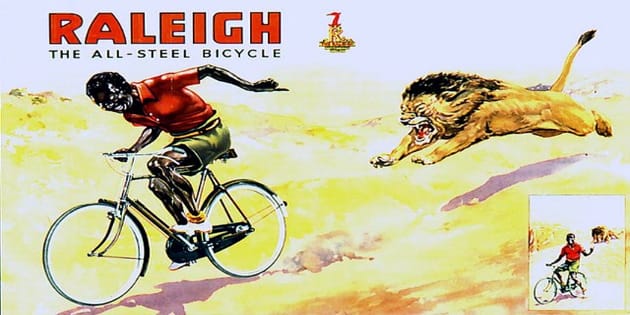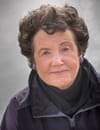Different Spokes for Different Folks

Raleigh ran an advertising campaign in Southern Rhodesia the 1940’s and 1950’s with unexpected consequences
Different Spokes for Different Folks
Charles Rudd trekked 600 miles by mule transport to obtain the concession Rhodes wanted from the Matabele chief, Lobengula, to occupy what would become known as Southern Rhodesia. The journey took 35 days of hard travel. The pioneer column soon followed with 62 wagons and 200 volunteers which trekked from Macloutsie, Bechuanaland into Mashonaland in 1890. The track cut up from Tuli was the only ‘road’. Remarkably, in the space of just a dozen years, despite two rebellions, Rhodes’ private British South Africa Company railways connected Southern Rhodesia with the east and south coasts with over a thousand miles of steel tracks. Settlements sprang up along the way.
Different Spokes for Different Folks
Getting around and about these ‘towns’ was another matter. Roads were slow to open up. Mule drawn American coaches were imported but the mules and horses were prey to hyenas and wild dogs. They were susceptible to nagana from the tetse fly in the Lowveld, and tick born East Coast fever was everywhere. Viral born rinderpest plagues wrecked havoc with imported oxen. Camels were introduced, but failed.
The first car, a 1902 French 6 ½ h.p. “Gladiator” was introduced into Southern Rhodesia by Major Charles Duly who had a cycle agency in Bulawayo. By 1908 there were 11 motorcycles and 6 motor cars licensed in Salisbury, the capital. It took 6 ½ days to travel the 300 miles from Bulawayo to Salisbury. Before 1920 the only ‘roads’ were mere tracks between major centers for dry weather use. During the rains small streams became torrents, the dust of winter turned into the mud of summer. The drifts through rivers became “feet deep floods where one could be stranded. There were no bridges. The tracks took the line of least resistance, circumventing swamps, rather than go through them, rounding ant-hills and big trees”. Huge dongas had to be negotiated.
Around town a commercial rickshaw service was the first type of public transport operated in Salisbury in 1904 by Mr. Craster. Self reliance on a bicycle found its place. Before the founding of St. Stephens Church’s wood and iron structure, in Que Que, in 1904, Rev. R. Truscott travelled the 40 miles from Gwelo on his bicycle to conduct a service now and again. The bike was heavy, without a free-wheel, sporting hard, rubber tyres. The criss-cross of well troden Native paths between rural villages provided the way for the missionaries who were solely responsible for early African education.
My parents made the arduous journey from Johannesburg to Que Que with all their worldly belongings in a South African camouflage-green army Ford, proudly negotiated as part of my father’s demobilization package in 1946. It was quite a landmark as he did his house calls (a source of local amusement). It was many years before he parted reluctantly with it. There was no question of getting a second car for my mother. She loved her bicycle which afforded her a great deal of independence. With white gloves, high heel shoes and dress hat loaded in the front basket she cycled in her sensible shoes to make her formal entry at mayoral functions (another source of amusement for the locals).
A car was far beyond the reaches of the African, but Sam Rick stocked all leading English makes of cycles at Globe Cycle Works. Alick Stuart claimed to be the cycle specialists for Hercules, BSA, Rudge-Whiteworth, Norman and Raleigh. Like Bata Shoes, Raleigh Bicycles saw in the African a huge potential market. By the 1940’s Raleigh set about a big advertising campaign to boost sales. A man on a bicycle could outrun that icon the king of the beasts, venerated since the Stone Age by so many cultures.
But Raleigh failed to take into account a different mindset. The ad was perceived as the lion, bound for the kill, in hot pursuit and soon to overtake the bicycle. Sales plummeted.
Unlike the US where every year 480,000 yellow school buses transport 26 million children to and from school and after school activities, rural children in Africa often still walk miles and miles to school. In 2004 nineteen companies partnered with Wildlands Conservation Trust to assemble and handover yellow framed Qhubeka bikes to rural children so they can arrive at school on time, ready to learn, if they have planted 100 trees or collected over 1500 kg of recycling. Over 100,000 bikes have reduced school commute time by as much as 75%. See more on:
This is a fine example of Brandscaping, Unleashing the Power of Partnerships, the topic of my son, Andrew Davis’ book which will be released this Monday, August 26.
https://www.brandscapingbook.com/
